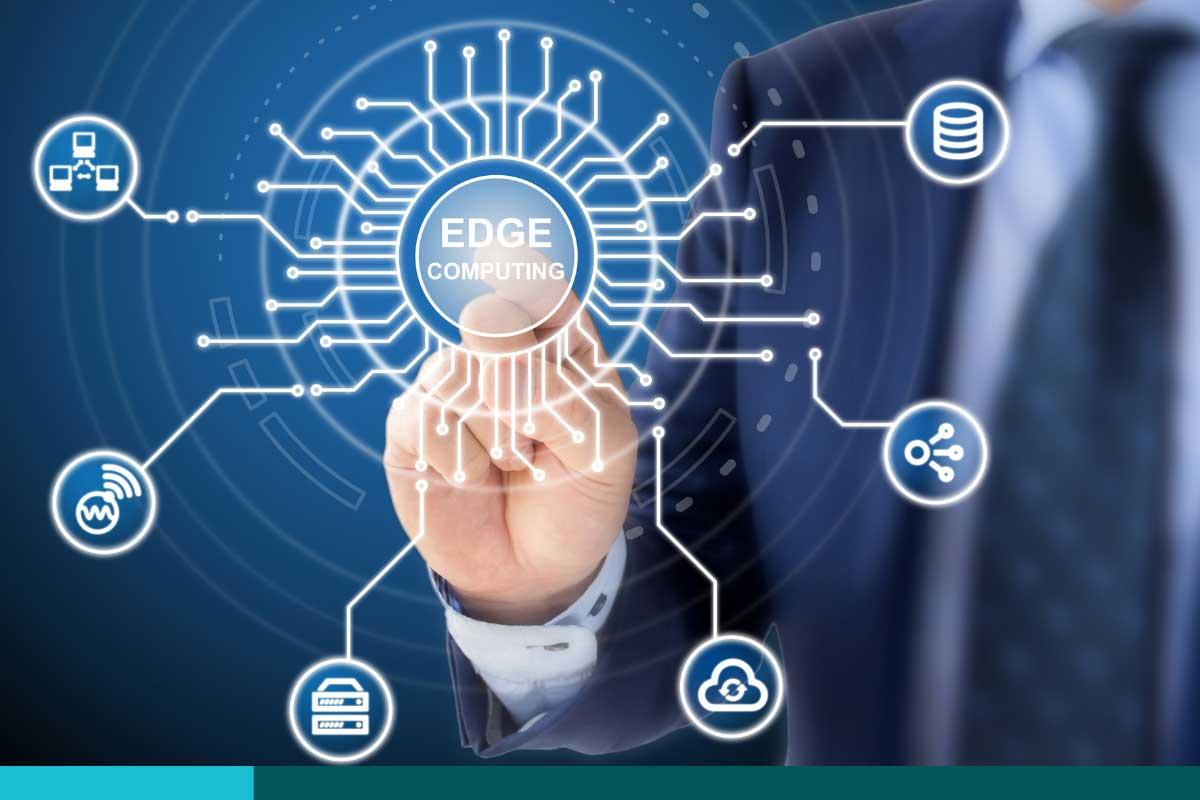The Growing Importance and Opportunities of Edge Computing in the Public Sector

Edge computing is transforming the public sector, providing increased efficiency, better decision-making, and improved services. The use of AI and machine learning is driving the adoption of edge computing in both federal and state/local government sectors. We will be examining what edge computing means for the public sector, explore recent developments and specific federal contracts, and discuss opportunities for information technology (IT) vendors and partners in this growing field.
Edge computing involves deploying servers close to data sources to boost communication speed, enabling faster and more reliable real-time data analysis. This technology is ideal for public safety, utilities, innovative city projects, and disaster management services. According to International Data Corporation's (IDC) EdgeView study, local and state governments in the Americas are projected to spend $4.9 billion on edge solutions by 2026, with most of that spending coming from the U.S.
The National Artificial Intelligence Research Resource Task Force in the United States has requested $2.6 billion from lawmakers to support artificial intelligence (AI) research over six years. The task force envisions that these funds will be used to create a shared computing resource for national AI research, which includes edge computing capabilities. The report emphasizes that a single agency should act as the administrative home for these resources, and a steering committee to oversee relevant AI operations. One federal edge computing contract example is the Defense Advanced Research Projects Agency's (DARPA) Microsystems Technology Office (MTO) program. The program aims to develop secure and energy-efficient edge computing solutions for military operations, including specialized hardware and software for real-time processing and decision-making. Another example is the U.S. Department of Energy's (DOE) investment in edge computing research. Back In 2020, the DOE awarded $20 million in funding for projects that focused on edge computing solutions to enhance the efficiency and resilience of energy infrastructure.
The Department of Defense (DoD) is also a significant player in adopting edge computing. Edge computing is especially important in the tactical edge where reliable network connectivity may be limited or non-existent. The Joint Warfighting Cloud Capability (JWCC) is a multiple-award contract vehicle that will provide the DoD the opportunity to acquire commercial cloud capabilities and services from the commercial cloud service providers. That scope of services includes the tactical edge. Leveraging JWCC, the military can process vast amounts of data in near-real-time using AI, facilitating quick and informed decision-making. Other federal agencies are also investing in edge computing. The Department of Homeland Security (DHS) uses edge computing for border security, deploying autonomous surveillance towers that utilize AI and edge computing to identify and track illegal border crossings. The National Oceanic and Atmospheric Administration (NOAA) is also exploring the use of edge computing for weather forecasting, with the development of a weather satellite system that can process data onboard the satellite, allowing for faster and more accurate weather predictions.
Regarding funding and contracts, the federal government has invested in edge computing through various channels. The National Science Foundation (NSF) awarded $50 million to fund the creation of four new regional edge computing hubs to promote the development of edge computing technologies and applications. The Defense Advanced Research Projects Agency (DARPA) has launched the Edge-DNN program to develop new hardware and software architectures for edge computing that can support AI applications in resource-constrained environments. Edge computing is also expected to drive innovation and the development of new tools that rely on machine learning and artificial intelligence. These advancements will enable public agencies to handle larger amounts of data, store it for extended periods, and derive valuable insights to enhance their services. Integrating edge computing in smart city projects will make cities more connected, efficient, and sustainable. As the public sector continues to invest in edge computing, there are significant opportunities for IT vendors and partners to collaborate with federal agencies to develop and implement edge computing solutions that can meet their unique needs.
We can look at specific state and local government contracts to further demonstrate the growing importance of edge computing in the public sector. For instance, San Jose, California, has implemented an edge computing solution for their smart city initiatives. They partnered with Cisco and Hitachi to create a secure and scalable platform that uses edge computing to process data from multiple sensors and devices in real time. This enables the city to monitor traffic patterns, public transportation, and environmental conditions, allowing for more efficient and sustainable management of city services.
Similarly, Las Vegas has invested in an edge computing system to enhance its public safety initiatives. The city partnered with NTT and Dell Technologies to create a platform with video analytics and machine learning to detect and prevent crime. The system uses edge computing to process real-time video data, enabling first responders to react quickly to emergencies.
With the growing investment in edge computing by federal, state, and local governments, there are significant opportunities for IT vendors and partners to offer solutions and services that meet the unique needs of the public sector. One of the key opportunities lies in the development of secure and scalable edge computing solutions. As more public agencies adopt edge computing to process sensitive data, IT vendors and partners must ensure their security solutions comply with relevant zero-trust regulations and can scale with the growing demand for edge computing in the public sector.
Another opportunity lies in developing edge computing solutions that can address specific needs such as public safety, smart city initiatives, and disaster management. By working with federal, state, and local governments, IT vendors and partners can develop customized solutions that meet the unique needs of these agencies. As this technology becomes more prevalent, there will be a need for IT industry employees in the public and private sector to learn how to use and manage edge computing solutions effectively. There is an opportunity here for IT vendors and partners to offer training and support services for public and private sector employees to ensure they have the knowledge and skills to use edge computing effectively.
Edge computing is transforming how the public sector operates, providing faster and more reliable real-time data analysis and enabling more efficient and effective services. With the growing investment in edge computing by federal, state, and local governments, there are significant opportunities for IT vendors and partners to develop and offer solutions that meet the unique needs of the public sector. By collaborating with public agencies, IT vendors and partners can help drive innovation and create new tools that complement the current momentum behind machine learning and artificial intelligence.
To get more TD SYNNEX Public Sector Market Insight content, please visit our Market Intelligence microsite.
About the Author:
Dawit Blackwell is a senior analyst of the TD SYNNEX Public Sector Market Insights team covering Federal Civilian agencies.





















